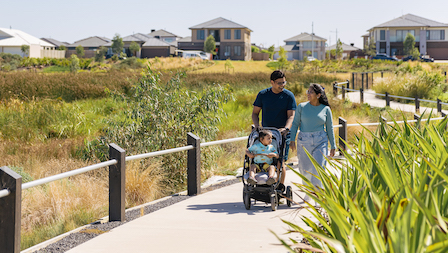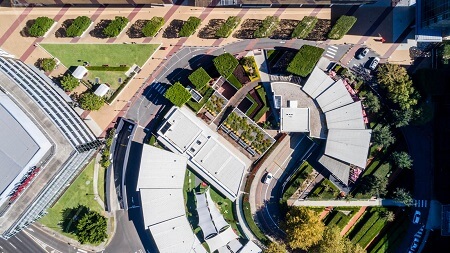Real estate investment strategies: How to build long-term value in property

Beyond just being places to live, residential homes and apartments are tangible assets with a history of consistent long-term growth. While other investments may fluctuate rapidly, property tends to appreciate steadily over time. This is often driven by factors such as more people needing homes, new infrastructure making areas more desirable, and the simple fact that there's only so much land to go around.
In this blog, we’ll explore top real estate investment strategies and various property investing approaches, outlining the key benefits and essential considerations for investors navigating the Australian real estate market.
Important reminder: This content is for educational purposes only and does not constitute financial advice. Please conduct your own research and consult with qualified financial advisors before making any investment decisions.

Understanding real estate investment strategies
The first question many budding investors tend to bring up: “What is the best real estate investment strategy?” Simply put, the ideal approach usually depends on what's happening in the market right now. For example, in a rising market, investors might focus on properties with strong growth potential, while rental-yield strategies would work better during slower periods. Economic factors, like interest rate changes, also have a big impact on buyer confidence and investment activity.
Active investing vs. passive investing
While market conditions act as a guide to real estate investment strategies, investors also have different ways of managing investments. The two primary paths include active involvement or a more hands-off approach, as shown below:
Rotate your device: Please rotate your device to landscape mode for the best viewing experience of this table. This will ensure all details are clearly visible and the table is easier to navigate.
Active investing |
Passive investing |
|
Level of involvement |
Directly involved in all aspects (tenant management, repairs, daily operations). |
Less involved in day-to-day operations. |
Control |
Directly owning/managing rentals or undertaking property renovations. |
Investing in Real Estate Investment Trusts (REITs), participating in managed property deals. |
Activities |
Greater control over investment and operations. |
Less direct control, relies on others' management. |
Potential returns |
Potential for amplified returns. |
Potential for income generation without active management. |
Time and effort |
Demands significant time and effort. |
Requires less time and effort for daily management. |
Suitability |
Investors with time, expertise, and desire for control. |
Investors with limited time or preference for hands-off management. |

Types of residential real estate investment strategies
For those looking at residential properties, the market offers a variety of investment approaches. Keeping your financial goals top of mind, let’s review different types of real estate investing strategies and determine which best suits your long-term vision:
Buy & hold strategy
This approach is most common among Australian investors. It involves purchasing a property with the intention of holding it for an extended period, profiting from long-term capital growth and rental income. It’s a tactic that focuses on stability and gradual wealth accumulation.
Fix & flip strategy
The fix and flip strategy centers on buying undervalued properties and renovating them quickly, in order to resell or rent the property at a higher price. A successful fix-and-flip can effectively maximise profit and achieve value appreciation in a relatively short time frame.
Short-term rentals & holiday properties
This involves leasing properties on a short-term basis, often targeting tourists or short-stay visitors. Income potential can be high, but it requires active management and can be subject to tourism fluctuations and local regulations.
Renovate & rent older properties
This strategy involves buying and renovating older properties to attract long-term tenants. Unlike fix and flip, the goal is not a quick sale but to generate ongoing rental income. In this scenario, thorough due diligence on the property's condition and potential renovation challenges is crucial for long-term profitability.
Cash flow strategy
With this approach, investors specifically prioritise acquiring properties that offer strong rental yields. The focus is on maximising monthly cash flow after accounting for all related expenses. Property selection is driven by factors ensuring high rental rates and low vacancy. While long-term appreciation is a bonus, the immediate goal is bringing in consistent, passive income.

Potential benefits of real estate investment
What makes real estate a good investment venture? Now that we have a better grasp of the top real estate investment strategies, here’s a breakdown of the potential benefits you can stand to gain through property investing:
- Capital appreciation: Over time, the value of well-chosen properties can increase, providing a significant return on the initial investment when the property is eventually sold. This growth is often driven by factors like population increases, infrastructure development, and limited land supply.
- Passive income: Investment properties, particularly residential units, can provide a consistent stream of income through regular rent payments from tenants, directly contributing to positive monthly cash flow for investors. This income can offset ownership expenses and generate passive earnings.
- Portfolio diversification: Real estate performs differently in comparison to traditional asset classes like stocks and bonds. By incorporating property into an investment portfolio, investors can enhance diversification, potentially reducing overall portfolio volatility and improving long-term stability.
- Inflation hedge: Historically, real estate values and rental rates tend to move in tandem with inflation. As the cost of goods and services increases, property values and the income they generate often follow suit, helping to protect the purchasing power of invested capital.
- Tax benefits and deductions: Depending on local regulations, real estate investors may be able to leverage tax deductions for mortgage interest, property taxes, depreciation, and operating expenses. This can enhance the overall after-tax return on investment, a consideration in both residential and commercial real estate investment strategies.

Considerations when investing in real estate
Despite its advantages, it’s also important to recognise that real estate investing is a long-term commitment. Consider the following factors that could affect your investment journey:
- Market volatility and economic cycles: Property values and rental demand can be influenced by broader economic conditions and market cycles. Understanding these dynamics is key to making informed decisions, from investment timing to location selection.
- Liquidity constraints: Unlike some investments that can be sold quickly, real estate transactions can take time. Keep in mind the less immediate nature of accessing capital, as real estate calls for a long-term investment horizon.
- Financing and interest rate shifts: The use of financing, like mortgages, is common in real estate investing, and changes in interest rates can significantly impact borrowing costs and overall investment returns. Carefully consider financing terms and potential rate fluctuations.
- Rising costs and inflation: The expenses associated with property ownership, including property taxes, insurance, and maintenance, along with general inflationary pressures on operating costs, can affect profitability over time. Proactive expense management is important for maintaining investment viability.
- Policy or legislative changes: Governmental regulations and legislative updates concerning property ownership, tenant rights, zoning laws, and development can introduce changes that influence your investment outcomes.
- Maintenance and unexpected expenses: Maintaining the physical condition of a property and addressing unforeseen repair needs are ongoing responsibilities for real estate investors, requiring both time and proactive budgeting.

Buying with Frasers Property Australia
For investors looking at the long term, Frasers Property Australia offers a century of expertise in developing residential, commercial, retail, and mixed-use communities across Australia. With over 145,000 homes under our belt, our masterplanned neighbourhoods and diverse property offerings are designed to foster connection, liveability, and well-being, supported by dedicated in-house teams.
Partnering with us means accessing meticulously designed communities with long-term value, backed by our stable global presence spanning over 70 cities across 20+ countries and a commitment to supporting you throughout your investment journey.
Ready to discover how these real estate investment strategies can work for you? Learn more in our Investor Hub.
Disclaimer: This material and its contents and any external links are provided for information purposes as a guide only and do not constitute an offer or contract or any part thereof. Its contents are subject to change at any time without notice.
Frasers Property does not make any express or implied representation or warranty that the information is accurate, complete or correct. Purchasers must make and rely on their own inquiries. June, 2025.
See more articles on













